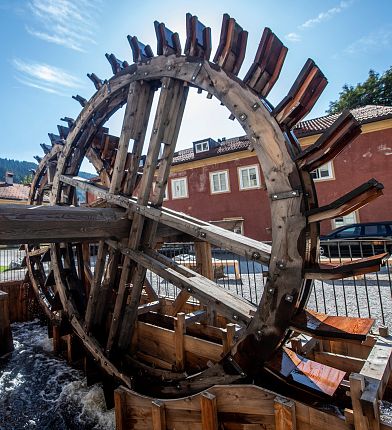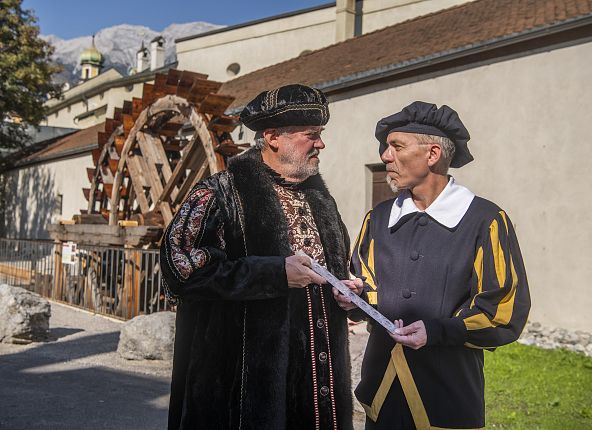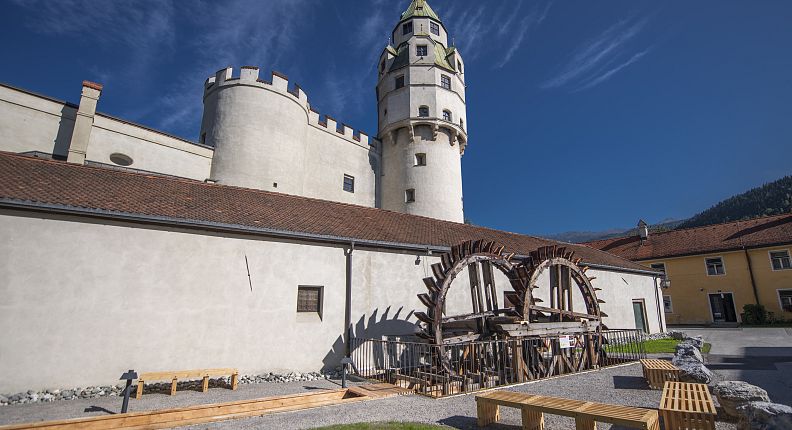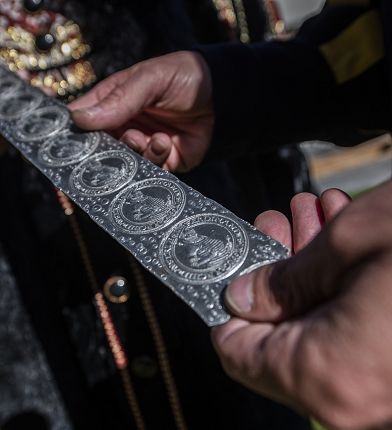Historic water wheel. At the Mint Museum Hall
To the west of Hasegg Castle with the Hall Mint Museum and Mint Tower, there has been a new attraction since early summer 2019: the two water wheels, each with a diameter of five meters, recreated on a 1:1 scale, provided the first hydraulic drive for a minting machine from 1571. As early as the Renaissance period, it was thus possible to multiply the number of pieces from the time of hammer minting by means of roller minting.
The roller minting machine was considered a technical sensation in the Middle Ages and was capable of minting around 4000 coins a day. By comparison, a minting journeyman could only manage around 300 coins per day by hand.




Technical revolution
In the 15th century, the so-called "Taler currency" was invented with the "Guldiner", which not only enabled economic exchange across national borders, but also gave its name to the dollar. The first functioning industrial coinage, roller minting, was also developed in Hall in Tirol. This technology spread throughout Europe, a wider area than today's euro zone, and was considered "state of the art" for a period of over 180 years.
The roller embossing machine - a technical sensation: The silver mine in Schwaz, which was operated by the German Fugger banking family, caused the demand for silver coins to skyrocket. The demand for new coins could no longer be met by the manual hammer minting that was still common at the time. So the search began for ways to automate the minting process. Archduke Ferdinand II of Tyrol (1529-1595) was a great fan of technical innovations. Under him, not only was the Hall mint moved from the city center to Hasegg Castle, but roller minting was also introduced.
The roller minting machine, which was driven by water power, was first used in Hall in 1571 and enabled the mass minting of silver coins. This form of minting was extremely efficient and gave the mint owner a significant competitive advantage. Hall was thus the first mint in the world to make the transition from a craft business to an industrial operation.



